"Even in hindsight, I would not change one whit of the Voyager experience. Dreams and sweat carried it off. But most of all, its legacy makes us all Earth travelers among the stars." -Charley Kohlhase
In the early days of space exploration, it was quite a feat just to get up and out of Earth's atmosphere. There's are two good, simple reason for that, of course: first, it takes a lot of energy to go up that high...
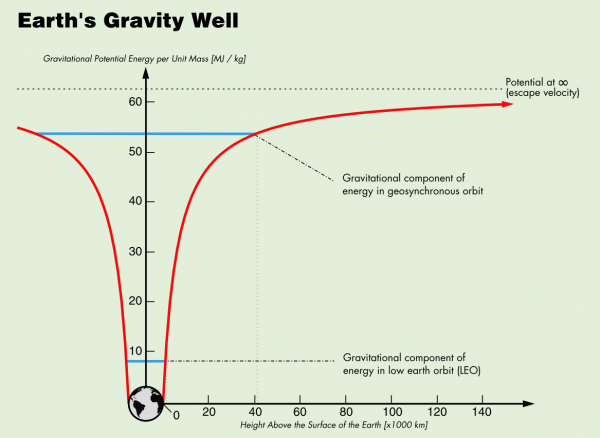 Image credit: Nathan Bergey of http://psas.pdx.edu/orbit_intro/.
Image credit: Nathan Bergey of http://psas.pdx.edu/orbit_intro/.
and second, if you don't get your spacecraft moving really fast, you're just going to fall back to Earth once you reach your maximum height.
Just to get up above the Earth's atmosphere, you need to rise to a height of hundreds of kilometers, and you'll have to fight your way through the atmosphere to get there. Although something simple like a balloon can get you up to an appreciable height, if you want to rise above the atmosphere, you need something with an incredible ability to propel itself, even in the absence of an atmosphere.
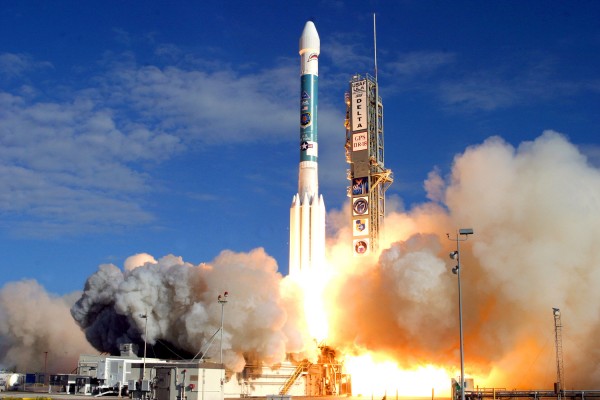 Image credit: Delta II rocket launch, public domain, via http://www.gps.gov/.
Image credit: Delta II rocket launch, public domain, via http://www.gps.gov/.
Just to overcome the gravitational potential energy of being on Earth, each kilogram of mass you want to launch up into space requires about a kilogram-of-TNT's worth of energy just to reach the edge of the atmosphere.
But if that's all you do -- much like the solid rocket boosters on the spacecraft above -- you'll just fall right back to Earth.
That speed is very fast: somewhere around 28,000 km/hr (17,000 mph) for the lowest-altitude orbiting satellites. Slower speeds all fall back to Earth at that altitude, while faster speeds will actually allow you to reach still higher altitudes, where you'll then -- if you can change your direction appropriately -- stay in orbit at a lower speed, but at a higher altitude.
And if you can achieve the equivalent of leaving Earth's surface at about 40,000 km/hr (or 25,000 mph), or about twice as much total energy as the lowest stable orbit around the Earth, you can actually escape from the Earth's gravitational pull, and venture off to other places in the Solar System, or even beyond.
But it's not so easy to go anyplace else, because... well, even if you free yourself from the Earth's gravitational pull, the Solar System's still kind of got it in for you.
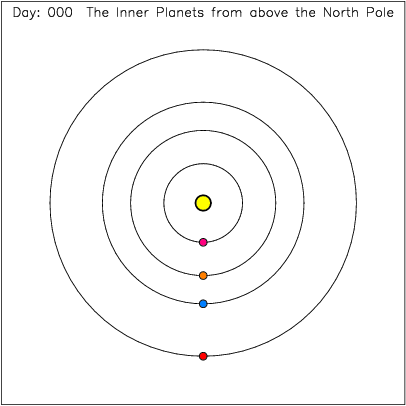 Image credit: John Lucey of Durham, via http://www.dur.ac.uk/.
Image credit: John Lucey of Durham, via http://www.dur.ac.uk/.
Even if you go through all of that, and escape from the Earth's gravitational pull, you'll still find yourself hurtling through space at around 107,000 km/hr (67,000 mph) around the Sun. While you were focused on escaping from the Earth's gravitational pull, the Earth was busy orbiting the Sun... and so were you!
But you're not stuck here, not if you've planned it just right, thanks to gravity, once again!
You know all about gravity, and all about conservation of energy, I know. But did you know that when you gravitationally fly-by a large mass -- like a planet or a moon -- you can either gain or lose speed, dependent upon exactly how you fly past it?
Here's the deal: if you're flying past another mass that you're not gravitationally bound to, and you and this mass are the only things around, you're guaranteed to leave with exactly the same speed you entered at, although your direction might be altered. But if there's a third mass involved, like the Sun (which, surprise-surprise, is always involved), you can leave with either a much greater or much smaller speed, thanks to a maneuver known as a gravity assist.
In some cases, you can even contrive just the right interaction (or set of interactions) to completely eject an object from a bound system, including
- a star from a star (or globular) cluster,
- a planet from a star system, or even
- a man-made satellite from our Solar System!
If you gain speed, it conserves energy by leaving the other masses more tightly gravitationally bound, and if you lose speed, it conserves energy by leaving the rest of the masses more loosely gravitationally bound!
We can use any planet, or even a set of planets, sometimes multiple times, to get a smaller mass (like a satellite or a spacecraft) to go where we want. And every once in a while, the right planet to use includes the Earth!
Such is the case, today, for our current mission to Jupiter, Juno.
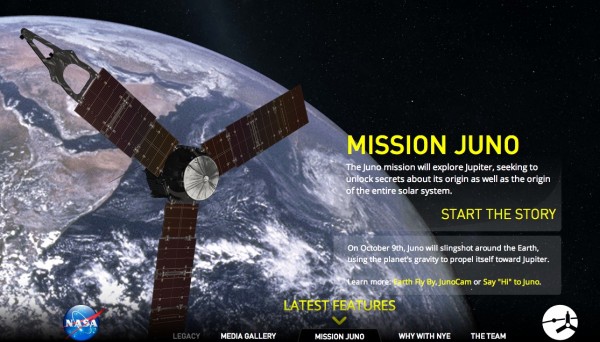 Image credit: NASA / SWRI; screenshot from http://missionjuno.swri.edu/.
Image credit: NASA / SWRI; screenshot from http://missionjuno.swri.edu/.
Today, October 9th, 2013, the Juno spacecraft is flying by Earth to get just the gravity assist it needs to boost it on its way to Jupiter!
Want to know something truly spectacular? It's visible from Earth, if you live in the right location and are looking -- with clear skies -- at the right time. Nick James of the UK captured the Juno spacecraft just mere hours ago in the early night skies, and was kind enough to make the video available to the public, which I've uploaded to YouTube.
We can make gravity do all the work for us, and that's how we reach the outer Solar System!

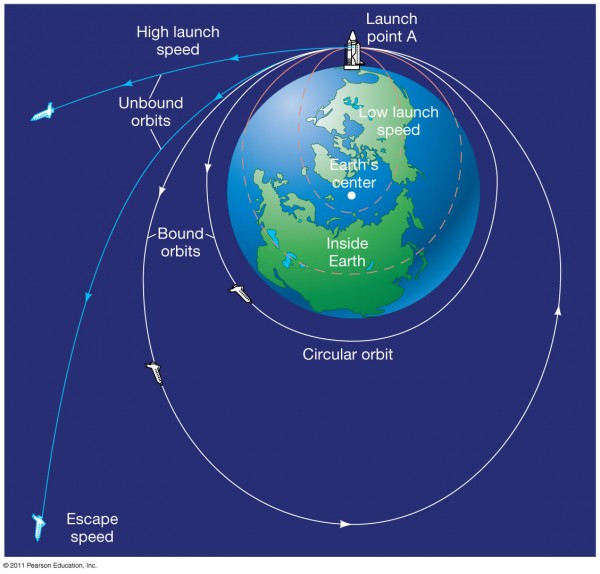
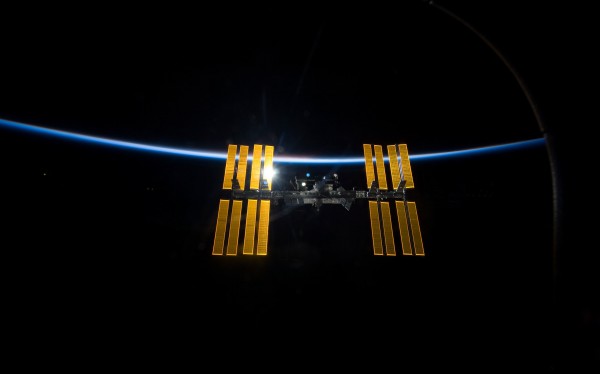
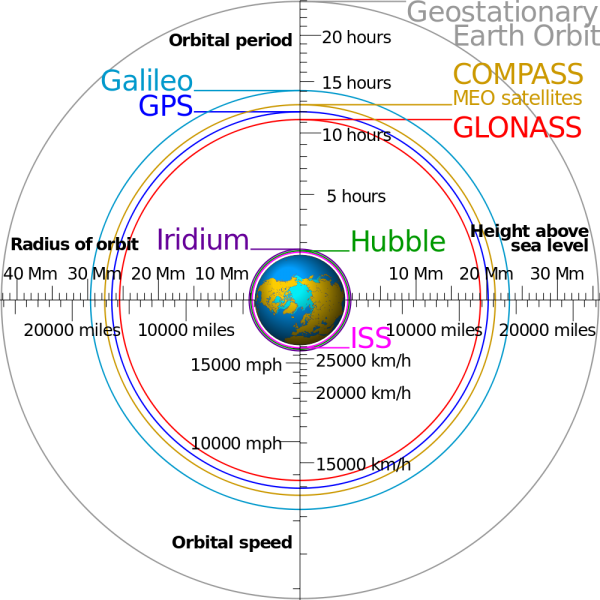



Hi Ethan. The top .jpg image:- "Image credit: NASA; Eyes on the Solar System." is a blank grey box for me in both firefox & I.E. I get this message:-
The Image "http://scienceblogs.com/startswithabang/files/2013/10/junoposition-full…" cannot be displayed, because it contains errors.
test [please ignore]
Hi Ethan.
Great post, but you've confused me [not hard]
In picture # 3 what happens between "bound orbits" & "unbound orbits"?
There's a gap there between the two & I can't figure what that might mean.
@Michael Fisher #3: Each of the orbits shown in figure #3 are just examples. If you start with the simple circular orbit, then as you gradually increase your tangential speed, your orbit becomes more and more elliptical (but still bound). Somewhere in there you'll hit the particular orbit shown in Ethan's figure.
Keep increasing, and the ellipse becomes more and more stretched out (eccentric). At 7 km/s, that ellipse becomes stretched out "all the way to infinity," and you reach the barely "unbound orbit" parabolic state, known as escape velocity. In this state, you'll travel off to infinity, but constantly slowing down such that (asymptotically), you would come to rest when you got out to infinity.
If you launch from circular orbit much faster than escape velocity, than instead of being on a parabolic trajectory, you'll follow a hyperbola, and have a residual velocity even out at infinity. This is the trajectory the Voyagers are following.
One epiphany I remember having long ago was that, if you adjust the scale enough, a gravity assist acts pretty much the same as an elastic collision. The difference, of course, is when you zoom in, and see the smaller object passing "behind" the larger one.
I would highly recommend Kerbal Space Program for learning about orbits and constructing rockets. A lot of fun and it's discounted right now as it is still in beta, but there is a free demo as well.
There are nice animations showing the principle:
http://commons.wikimedia.org/wiki/File:Swingby_acc_anim.gif and http://commons.wikimedia.org/wiki/File:Swingby_dec_anim.gif.
Good blog piece Ethan. Well-written, interesting, informative, entertaining, just the job. Shame NASA is still shut down. One day I'll have a look at "alternative methods of propulsion". Funny thing is, it will have to be the opposite of the Irish joke.
@Michael Kelsey
Michael, I guess you know that the escape velocity, starting at the surface of Earth, is 11 km/sec. At what point in the trajectory is the escape velocity equal to 7 km/sec?
You're going to have to explain your question, George.
If you're merely talking about "where in the orbit is 7km/sec remaining to escape earth" then it's when you're at the orbit rotating at 4km/sec around the earth.
Michael Kelsey & the other educators here :) ...
Cheers. I've got it. It's like different conic sections now I think about it.
Stunning piece here, Thanks for this.
Love the shuttle booster ride one (think I aw an earlier un-annotated version of that once o r twice)and the clip of Juno seen from the ground.
Plus the illustrations, graphics and writing. Cheers!
Kerbal Space Challenge is quite accurate (and to an extent, not really a great game) in its use of orbital mechanics. Modern attempts to do accurate physics with Lunar Lander have been even worse, mind, and the less said about Elite II: Frontier et al the better...
But KSP is quite amusing and they at least give you a useful gimbal system and project your orbital path rather than just expect you to see four-dimensionally...
@Michael Fisher
Perhaps you might be looking for an intermediate dashed arc drawn there with the label Escape Velocity Threshold
@George Monser: Stupid units! Yes, of course, Earth escape speed is 11 km/s (a.k.a. 7 mi/s); thank you for catching that.
Since America is unlikely to adopt the metric system any time soon, I propose we re-define standard lengths to be more easy to use in conversions. Make the mile equal 1000 feet. The foot would be 100 inches. The inch would be 2.54 times smaller than it's current length. That'll show that stupid frenchy metric system.
OK, so the issue was that you'd used the wrong units and george just was nudging you on it.
Jason, my peeve with "defenders" of the metric system (who are really "Attackers of the imperial system" - they want people who use or like imperial TO BE WRONG - is that their arguments are so mindbogglingly stupid.
Like their opening go-to strawmen "How many miles to a hogshead do you get?"
Yes, conversion from one unit to another unit is a caclulation.
However, metric doesn't have a benefit there: there is no unit change.
The Imperial system is 100% as good as the metric one. Use feet. Kilofeet. Millifeet. Or whatever. How many feet in a kilofeet? 100% exactly the same as the crowing "How many meters in a kilometer?" they think so very smart. change "meter" to feet and it becomes obvious why it's %$&*%$ing stupid.
Light year is not given the same vitriol because in that case, it's hard to use "metric order"meters away to a star. AU for the same reason to get to planets in our solar system. Parsec is a different derivation DONE FOR PRECISELY the same reason as feet, chain, acres, link, fathoms, pounds, hundredweight, and so on.
*They make working in the appropriate scheme easier*.
eV: precisely the same point. No screaming "GET IN THE 20thCENTURY" there.
You do not measure the distance from Bristol to London in miles, furlongs, yards and inches. So why do you need to care about how many feet in a mile when you want to know the distance from Bristol to London for your drive there?
The only good reason to move to metric is NEVER proposed where I see the argument of imperial/US vs Metric:
So many others use Metric, why not just make it easier to cooperate across the world?
There's no need for a better reason to move.
But to prove those who like, use or merely defend the imperial system are wrong, you need much much MUCH more than that.
Hence the attempts to ridicule that are, ironically ridiculous.
@Wow: TL;DR. The bottom line from your post is "Any single system of units is fine. There's no good reason to choose one over another." That's not completely true, though I will agree that many of the straw-man examples (as you cited) are absurdly overstated.
The "Imperial system" is actually a variety of different, mutually incompatible, systems of measurement, which evolved over a long, and mostly non-technological, timescale. As a result, the "standard" units of length, weight, volume, etc. are unrelated to one another. What's more, there are no standard "Imperial" units for electricity or chemistry.
The SI system was designed, rather than evolved. All of the basic "mechanical" units are interconnected on the same decimal basis: length, volume, force, mass, etc. The electrical units have a separate basis, but derived electrical units (charge from current, capacitance, voltage, etc.) use the same mechanical units for scaling, so conversion is easy.
So there is a logical reason to prefer SI, as a unified system, over Imperial. And there is an absolute preference to choose _one_ system vs. mixing the two in a single application (c.f. Mars Climate Orbiter).
So if you DR, how do you know what it's talking about to comment on? How can you discern any facts about the post you didn't read?
DR your post beyond "@Wow: TL;DR." because nothing after that could be informed by anything I wrote.
@ Wow
There is an innate deficiency in the imperial system that is undeniably obvious for those that routinely calculate in those schemes. Systems of measurement that are solely based on decimal units are much easier to utilize and are inherently less prone to error. Linear measurements in the imperial system, used by architects for example, require constant shifts in numeric base to accompany the varying spans of incremental magnitudes. Constant transposition from decimal (feet) to duodecimal (inches) to octal or hexadecimal (eight or sixteenths of an inch) during calculations is unarguably inefficient, to say the least.
Due to our perpetual daily referencing of time, the base-60 system is second nature to us. But once again, it's base system shifts when increments of seconds occur. This is also present in representations of the arc-circle. Numerical units shift from sexagesimal (minutes:seconds) to decimal fractions of minutes. All angular calculations in this regime require conversions, or base system shifts, at some point. Long-lat coordinates are included in this.
I dealt with this daily throughout my drafting/surveying career. Although it pretty much became second nature to me, the inconvenience was ever present. At least civil engineering regimen overwhelmingly demands decimals of feet, and often decimals of degrees, to simply calculations. Errors which often occurred in construction projects were undeniably exacerbated by frequent, but necessary conversions between civil and architectural standards.
A most egregious example of the problem of inherent inefficiencies in differing standards was the unfortunate loss of the Mars Climate Orbiter. A failure to program a conversion from non-SI units of pound-seconds (used by one computer) to the SI metric units of newton-seconds (used by a second computer ) as they exchanged control of the craft resulted in it's demise.
Yet it was strangely apropos.
There are two types of units: Those based on meaningful physical quantities, and those that are arbitrary. AU, parsec, light year (and year for that matter) all fall in the former category. Such units cannot be expected to be even multiples of each other unless nature deigns confer a set of unusual coincidences.
Foot and meter, on the other hand, are arbitrary. And if you're crafting a system of arbitrary units, and you design it so that the units used for discussing various scales are not multiples of the base your numeric system uses, then you fucked it up. If you make it where your unit of volume isn't even related to your unit of distance, then you REALLY fucked up*.
As MK said this isn't really the fault of the "designers" of the Imperial system as there weren't really any. It's bogged down with a lot of legacy cruft.
We could of course do as you suggest, and forget that "mile" and "yard" and "inch" exist and only use power-of-ten multiples of feet, and forget about the units of volume entirely and just use cubic feet. That's not the Imperial System though. That's a new decimal system of measurement that uses the foot instead of the meter as the basic unit of distance.
Your argument is a good one for saying that "meter" is not better than "foot". The SI system could have been based on the foot instead of the meter and it would be just as good.
The Imperial System is not such a system, and is bad. A good system could be derived from it, but that good system would have exactly one thing in common with Imperial.
* The US system at least partially fixed this but the conversion factor is even more dumb than usual.
Comment #21 erratum:
"Numerical units shift from sexagesimal (minutes:seconds) to decimal fractions of minutes"
I meant to say:
"decimal fractions of seconds
Being from Europe, have used metric system all my life. I don't mind inches in imperial system. What I do mind is all the different measures for all the different things in imperial, and absolutely no consistency.
I.e. instead of using inches or whatever standard, you have inches for some things, then when you talk about personal height it's in feet (haven't heard anyone say how tall they are in inches... yet it seems perfectly logical). Then when you move further, you get yards or whatever. Then in fluids.. barrel and gallon... like it wasn't hard enough already. But wait... barrel is not the same in all countries... and even more not for same things.. so i.e. a barrel of oil and a barrel of milk are not the same quantity... it's insane...
Practical problem... was reading online something about beer, and all units where in barrels... I couldn't find exactly how many liters people were talking about because I didn't know which country the poster is in (different value in US, UK, Australia)....
I don't really care weather it will be meter, foot or whatever.... just make the whole world use one standard and be over with it.
I have a problem with the maths of "getting to the edge of the atmosphere":
you state:
"Just to overcome the gravitational potential energy of being on Earth, each kilogram of mass you want to launch up into space requires about a kilogram-of-TNT’s worth of energy just to reach the edge of the atmosphere."
The egde of earth's atmosphere is generally accepted to be at 100km above the earth surface. The GPE increase to get there is less than mgh (as g is decreasing slowly as you go up). mgh for 1 kg = 1Mj
the energy in 1kg of TNT is defined as 4.184MJ.
So it takes less than a quarter of the nergy in 1kg of TNT to overcome the GPE of earth.
I am afraid the following is completely wrong:
"Here’s the deal: if you’re flying past another mass that you’re not gravitationally bound to, and you and this mass are the only things around, you’re guaranteed to leave with exactly the same speed you entered at, although your direction might be altered. But if there’s a third mass involved, like the Sun (which, surprise-surprise, is always involved), you can leave with either a much greater or much smaller speed, thanks to a maneuver known as a gravity assist."
No third body is required for a gravity assist. The best way of thinking about a grvaity assist is like a completely elastic collision between a large and a small moving object. Say the large object is moving at v, and the small object at V. If the small object elastically collides dierctly with the big object with the two velocities in oppositie directions, it leaves with velocity v +V - i.e. it has gained KE - obviously at th expense of the KE of the large object, which slows down a little. One example of this would be throwing a tennis ball straight at a passing train - if you threw at 40m/s, and the train was going at 20m/s your ball would bounce back at 40 + 20 = 60m/s (if completely elastic).
In gravity assists the space craft is the tennis ball, and the planet is the train. Gravitiy assists rely on the space craft approaching the planet in a direction opposite to the planet's motion, and using its gravitational field to perform an elastic collision and leave in the direction of the planets motion - now with the velocity of the planet added to its original velocity.
No third party is needed.
No third party gravitation is needed, but a third-party reference frame is.
I believe the reason some people object to gravity assists is because they're picturing the probe as speeding up relative to the planet, and if you take the planet as stationary then it's just like the high school Conservation of Energy picture of a ball rolling down a u-shaped ramp. It can't be going faster up than it was going down at the same height.
Which is correct, but what we care about is velocity relative to the sun. Because the probe's speed relative to the planet doesn't change, and the fact that the planets are moving relative to the sun, is another way of stating how assists work.
@CB
I take your point that the issue is speeding up relative to the solar system frame to get to, say, an outer planet, but the sun plays no role in this.
Consider a trip in deep space, well away from our solar system - if on the way one encountered a large mass with the right velocity vector you could use that to increase your space crafts velocity - with no sun anywhere near, though obviously with a destination of some sort, possibly another solar system.
@ CB & Waterbergs
as a non academic it's interesting for me to follow your discussion. Both of you are correct in your own view. It's so cool how physics works.
If only two bodies are present... then what happens is the trajectory only changes.. because like CB said, in order to get valid measure of speed increase, you need a 3rd reference point. Because they are just there in void... moving... relative to themselves, can't say the spacecraft accelerated or deccelareted unless a third observer is present.
Yet waterbergs is also correct that as far as mass, the 3rd reference point needn't have any gravitational influence.
"There is an innate deficiency in the imperial system.... Systems of measurement that are solely based on decimal units are much easier to utilize and are inherently less prone to error."
Wrong.
Twice, really.
Since if the second half of that were the evidence for the first, then the first is wrong because that isn't "an innate deficiency".
And the second half is wrong because I use, for example, distance to London of 83miles. If it were to be stated in km, that would be 133km. There is as much a problem moving from metric to imperial as imperial to metric. Converting units is not necessarily easy and this does not prove anything about the units or conversion, but may indicate something about someone complaining about them.
"Constant transposition from decimal (feet) to duodecimal (inches) to octal or hexadecimal (eight or sixteenths of an inch) during calculations is unarguably inefficient, to say the least."
If it bothers you, don't.
A measure 4.5ft is just as accurate and easy to do as one that is 1.5m.
Again your ""inarguable" point requires that it not be argued or looked at as anything other than "well, it's true, innit?".
"A failure to program a conversion from non-SI units of pound-seconds (used by one computer) to the SI metric units of newton-seconds"
Can be seen as a failure to convert from SI units to non-SI units just as validly.
Computers find this sort of calculation no harder since you are INSISTING on the insane (from a binary computers' POV) to use the bloody mad decimal system.
"There are two types of units: Those based on meaningful physical quantities, and those that are arbitrary. AU, parsec, light year (and year for that matter) all fall in the former category. Such units cannot be expected to be even multiples of each other unless nature deigns confer a set of unusual coincidences."
And imperial is just such one.
Unless you're saying that AU, Light Year, eV and parsec (et al) are wrong, then you're just putting them in a special pleading category of "yeah, but they're different, right?".
How much does a litre of syrup weigh in kilos?
You need a conversion factor.
Not so different to Imperial, is it.
"What I do mind is all the different measures for all the different things in imperial, and absolutely no consistency."
I bet the newspapers piss you right off, then, with their "four times the size of a double decker bus" and "Fifteen Libraries of Congress"... :-)
Here's how it works.
Learn.
The rod is the length of rod that you can put behind an oxen to plough the fields. A furlong is the length of time the oxen can be expected to pull a plough through the soil to till it, at which point your animal needs a rest during which, why not unhook and turn the animal round to do the next row. And eight furlongs is as much as can be done in one day by an oxen.
And the area that eight rods times one furlong, the amount that can be dealt with by a peasant farmer in one day is...
An acre.
So if you have 40 acres and 10 peasants to work on it, you now know how long it'll take them to ready the soil for planting.
During the 16thC toffs thought that it would be a lot easier for them to draw up the plans using squares rather than the funny shaped long thingys that were acres. So they made them square instead. However, each row requires the setting up of the ox train to do the next furrow and therefore the more times you have a row, the more land you've wasted. And you waste more time doing it. So you take longer to do a square acre than one day.
Thinking they knew better because it's "just plainly better" to have some simple definition of area they reduced the productivity of the farms 20%.
A hundredweight is a sack the size of which you can lift and load a wagon easily. Much bigger and you will tire too quickly, much smaller and you will spend longer ferrying.
A pound is about what you get in a small sack. Ounces you measure out. An inch is the size of a finger joint, a foot something you can hold in your hands, yards something you can stride out, a league about an hours walk, and so on.
A fathom means it's too deep to fail to drown. A pint is a large, but reasonable drink. A gallon a large clay jug. A tun a large static barrel about three feet in radius. A barrel is about as big as you can safely roll around to shift.
Odd conversions from various options (e.g. hogsheads to gallons) are because someone for tax purposes and assaying (and later mercantile trading) needed to know how big they were when you transferred a one tun cask into barrels for dock trading then to pints in the hostel.
Just because they've been mashed together a couple hundred years ago doesn't mean they had no rationale for being the size they are.
Celsius requires pure water. Quite hard. And a large difference when it's not pure for accurate calibration.
Farenheit uses saline, much easier to make 100% saturated (keep putting salt in until it precipitates) and because it's not pure, less affected by other impurities.
The kilo is still "That thing in that museum" so the definition of it isn't much better than the apocryphal "yard the length of King James' arm". And in preliterate/numerate society, a length you can measure out pretty accurately with your own arms is a hell of a lot more useful than something that requires a measuring stick.
"But wait… barrel is not the same in all countries… and even more not for same things.."
Money isn't the same in all countries either.
The meter isn't the same length as the yard. And the meter was defined as a French-only measurement system which got widespread use because France is now the largest (as in spread of sovereignty) empires ever in the history of the human race.
All of those things have been arbitrary and defined locally.
A "units conversion" that doesn't require units makes more sense in a society where mathematics is better known but before calculators were commonplace. And imperial already had a unit for long or short distances, so people didn't take to the idea of kiloyards or millimiles since they already had miles and yards for the purpose. Metric didn't have one.
So people STILL call "kilometers" "the natural unit". WORSE, the SI system uses the compound unit "kilograms".
WTF?
Kilo.
Grammes.
???
Meh, make it up, no worries. Don't pretend you've not just made it up.
@Wow:
"There is as much a problem moving from metric to imperial as imperial to metric. Converting units is not necessarily easy and this does not prove anything about the units or conversion, but may indicate something about someone complaining about them."
Wow, way to completely miss the point there. The pro-metric (or anti-Imperial, if you insist) point there is about conversion within the respective systems, not from one to the other. E.g. kilometers to meters, vs. miles to feet.
Waterbergs: Yeah, I'm only saying the sun is used as a reference and it's relative to that reference (or any other outside reference, but only such references) that gravity assists are possible, not that it is participating.
@CB
I guess one can say that a journey is only possible if you have a reference frame to journey in - at the very least a start point and a destinantion. This is true, but fairly trivial.
My point is that no nearby third mass is required for a gravity assist, and I think that point is correct.
For some funny reason there is always confusion about gravity assists. I remember a friend arguing fiercely from conservation of energy that gravity assists were impossible. I personally found the train/elastic collision analogy made it clear for me.
Wow: The foot, like the meter, is an arbitrary distance chosen by humans. Back when the foot did have physical significance it also had no consistency and so was an even worse unit, at least by the standards we would use to judge a unit system today. Which is what we're doing.
The average distance between the sun and earth is not decided by humans, it is a fact of nature. *Why* that physically significant distance is a useful unit is a valid but different question. The point is humans don't get to pick how far the earth is from the sun, or how far light travels in a year, so the fact that these different units have no simple relationship is also a fact of nature.
Whereas if you are choosing arbitrary distances for your system of units, and your distance units for different scales, or other distance-related units, are not simple power-of-ten conversions then your unit system sucks.
Your choice of example is designed to hide this deficiency. Volume is related to mass by density, which is different for every substance and has nothing to do with units (though metric does manage to squeeze a . Now how about my example: Convert volume to distance-cubed. These are literally the same quantity, not based on the material in question, and therefore a constant for every unit system. I can convert litres to cm^2 or m^3 trivially. Now try gallons to feet^3.
Once again, "foot" is just as good a unit as "meter". The difference is when you get a bunch of other units together and craft a unit *system*. A good system, equally as good as metric, could trivially be crafted with the foot as its basic unit of measure. That good system would not be the Imperial System which sucks.
.... of course one also gets the equivalent of grvaity assists with all ball games. How can a baseball fly as far as it does when hit? Because it leaves the bat with something just less (less due to inelasticity) than the combined velocities of the swinging bat and the pitched ball.
Waterberg:
"I guess one can say that a journey is only possible if you have a reference frame to journey in – at the very least a start point and a destinantion. This is true, but fairly trivial. "
Not sure I understand this. I'm not disagreeing with any of your previous points.
I'm just saying that you can only increase or decrease speed via gravity assist relative to some outside reference frame, not the planet itself. I don't think it's trivial. I think it's fundamental to why gravity assists confuse people.
"For some funny reason there is always confusion about gravity assists. I remember a friend arguing fiercely from conservation of energy that gravity assists were impossible. I personally found the train/elastic collision analogy made it clear for me."
I'm guessing part of the reason the train analogy makes sense is because you naturally picture yourself stationary on the ground (or hovering, whatever) watching the train and ball move relative to you
Whereas your friend is picturing the how the probe is moving relative to the planet, and thinking the assist means the probe speeds up or slows down relative to the planet, implicitly taking the planet to be the stationary reference frame. In this case it is absolutely true that the probe (or ball) cannot depart the planet (or train) with more speed than that with which it approached. That would violate Conservation of Energy.
The beauty is that both views are correct, and are in fact exactly the same after a coordinate transform.
But if you make the wrong assumption of viewpoint, then suddenly it sounds like NASA is contradicting some basic (and correct) physics you learned in school.
I think they aren't even realizing they're making this assumption. After all, you probably don't (I know I don't) think of the earth as moving when considering the train and ball. I take earth to be stationary. And so did basically all of the "Conservation of Energy in a gravitational field" problems in high school and college, at least where the planet was the only important gravitational field (which it is in this case).
So I think explaining that it's the probe's motion relative to the sun that gets a kick thanks to the planet's motion relative to the sun would go a long way toward clearing up the confusion.
That's just my theory, anyway. Is anything actually clearer now? :)
@Wow
"Money isn’t the same in all countries either"
that's irrelevant. I said barrel measure isn't the same in different countries. Where liter i.e. is same.
To make this clear... and I think you missed my point by a wide margin. Doesn't matter what unit is used as long as everyone uses the same thing. Use barrel.. no problem. But one barrel then needs to be same everywhere, so you can convert if you want. Currently, if I tell you I have a barrel of milk, there is no way you can know how many liters of milk I have because you don't which "barrel" value I'm using. And to have something like that in 21 century is ridiculus to me.
Hi CB,
I think we are on the same page here.
I think the only point I would like to emphasize is that that any refrence frame relative to the journey involved will do - and such a reference farme is of course essential for any journey. Hence my deep space trip example. It is critical to note that the sun itself plays no role in the assist - one could reform an assist travelling between two small asteroids using a helpfully placed white dwarf that just happened to be in the right place at the right velocity between them.
Sure, any reference frame against which the planet has relative motion.
Whatever that frame is, it still needs to be mentioned, because it's why the gravity assist doesn't violate CoE.
"“Money isn’t the same in all countries either”
that’s irrelevant."
To the statement "The size of a barrel is different in different countries" it's entirely relevant.
Each country made up their own standards. Money same as other measurements.
How the hell do you think they're *irrelevant*???
" Where liter i.e. is same. "
And where the pint is the same, which is the case in many countries (the USA being a bit of an oddity in that regard, having retained the older measures when they spit from the empire) this proves that imperial is just as good as a litre?
If not, then your statement is irrelevant.
"Use barrel.. no problem. But one barrel then needs to be same everywhere"
It is. Oil is measured in them.
*MY* point is something you've missed apparently entirely because it's orthogonal to that. MY point is that the common argument against imperial "how many rods to the hogshead" is bloody irrelevant. You can have as easy a time with imperial by doing exactly like the metric system does: don't use different units, stick with one.
E.g. kiloyards.
"How many yards to a kiloyard?" is a question that points out how utterly stupid and banal the question is but ignored to say "How many meters in a kilometer, huh? SEE, that's why metric is good!".
The litre is the same everywhere because the one country pushing it pushed it out through their massive empire because it's Napoleon's idea and it screwed over those English pigs, who pushed THEIR measures widely.
Uniformity of metrology has NAFF ALL to do with it as you point out in your "My point which you missed..." but is rather the entirety of your argument about why "Not imperial".
Anyway, hopefully the background on the derivation of acre and why it's such a bloody useful measure when 90+% of the population are agrarian and innumerate.
"Wow: The foot, like the meter, is an arbitrary distance chosen by humans"
Yup, but the definition of the meter was
a) really very wrong
b) more than a bit bloody useless for everyday.
The definition defined it by longitude through Paris because the UK had the Greenwich Meridian and maybe defining the distance through a different line would make it become irrelevant.
Identity politics.
But they got that distance wrong, anyhow.
But base-12 system has more factors. Half is easy in both. A third is in most cases much more useful than half and as easy to measure: create an S and cut the edges.
But no representation in meters unless you use just fractions. Which is
a) just as available in imperial
b) also gives whole inches when using feet, whole feet using yards, etc
"Back when the foot did have physical significance it also had no consistency and so was an even worse unit, at least by the standards we would use to judge a unit system today."
'sfunny. Metrology has the inch being 2.54cm, precisely defined as accurately as the metric unit. And it's been 12 of them to the foot for as long as anyone cares to remember.
Moreover, something a foot in length is handled easily. Something a meter in length is not.
The metric units were defined for easy maths with an increasingly numerate culture. They completely ignored that these measures were to be useful to humans, hence they never really took on.
Except in sciences where they were more likely to do the maths, didn't have calculators, and didn't really care that they were in factuality an inconvenient size for humans.
"The average distance between the sun and earth is not decided by humans"
Well, there's a pointless comment from you.
The radius of the earth is not decided by humans either.
Do you know ANY metrology, or is it all memes and catchphrases you've heard and parroted without thinking?
Hi CB,
I don't think the refernce frame has to be one against which the planet has relative motion for CofE - Energy is conserved just fine in the centre of mass reference frame of the planet - planet has zero KE before and after, space craft has 0.5mv2 before and after - Energy conserved.
The importance of the non rest frame for the planet is that this is the one against which the journey is measured. If the planet is moving at the same speed as the craft then obviously there can be no gravity assist - it only works for certain values of the planets motion relative to the motion of the craft in the direction of its journey.
Hey Waterbergs
"I don’t think the refernce frame has to be one against which the planet has relative motion for CofE "
Sorry, that's not what I meant. CoE is conserved in all frames. I meant that to get the change in speed from a gravity assist, *and* conserve CoE, you need to be measuring that speed relative to some frame other than the planet. That's why some people think it is impossible -- they're thinking relative to the planet, and it is impossible relative to the planet.
"The importance of the non rest frame for the planet is that this is the one against which the journey is measured."
Exactly. It's what you're measuring your relative velocity against. Which makes it a critical part of formulating the problem. It's why people who say it's impossible are wrong -- they have the correct conclusions from the wrong assumptions. Choice of reference frame is trivial once you've sorted it out, but it's still important to do so.
It's my guess that if the next time you are talking to a friend who thinks that it is impossible and violates CoE, if you explain that they are correct relative to the planet, but that the change in speed is relative to the sun thanks to the planet's own relative motion, you may reach a breakthrough.